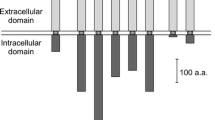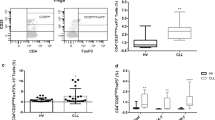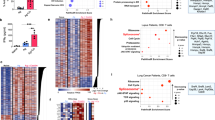Abstract
Members of the chemokine (Chemotactic cytokines) superfamily and their receptors play a major role in trafficking of immune cells under homeostatic and inflammatory conditions. The chemokine receptor CXCR3 is expressed mainly on activated T lymphocytes and binds three pro-inflammatory, interferon-γ-inducible chemokines: monokine induced by IFN-γ (Mig/CXCL9), IFN-γ-induced protein-10 (IP-10/CXCL10) and IFN-γ-inducible T-cell α-chemoattractant (I-TAC/CXCL11). CXCR3 and its agonists are involved in a variety of inflammatory pathologies, making this receptor an attractive target for the design of new anti-inflammatory drugs. Interestingly, a growing body of evidence suggests the existence of at least two novel variants of CXCR3, namely CXCR3-B and CXCR3-alt, which present challenges in the design of new anti-inflammatory drugs targeting CXCR3. In this chapter, we describe the collection, isolation and activation of human peripheral blood-derived T lymphocytes and methods to examine the expression of CXCR3 and its atypical variants at both mRNA and protein levels, as well as protocols for exploring the biochemical and functional responses of T lymphocytes to all known CXCR3 agonists.
Access this chapter
Tax calculation will be finalised at checkout
Purchases are for personal use only
Similar content being viewed by others
References
O’Hayre M, Salanga CL, Handel TM, Allen SJ. (2008) Chemokines and cancer: migration, intracellular signalling and intercellular communication in the microenvironment. Biochem J 409, 635–49.
Sallusto F, Lenig D, Forster R, Lipp M, Lanzavecchia A. (1999) Two subsets of memory T lymphocytes with distinct homing potentials and effector functions. Nature 401, 708–12.
Qin S, Rottman JB, Myers P, Kassam N, Weinblatt M, Loetscher M, Koch AE, Moser B, Mackay CR. (1998) The chemokine receptors CXCR3 and CCR5 mark subsets of T cells associated with certain inflammatory reactions. J Clin Invest 101, 746–54.
Nagata K, Tanaka K, Ogawa K, Kemmotsu K, Imai T, Yoshie O, Abe H, Tada K, Nakamura M, Sugamura K, et al. (1999) Selective expression of a novel surface molecule by human Th2 cells in vivo. J Immunol 162, 1278–86.
Sallusto F, Lenig D, Mackay CR, Lanzavecchia A. (1998) Flexible programs of chemokine receptor expression on human polarized T helper 1 and 2 lymphocytes. J Exp Med 187, 875–83.
Singh SP, Zhang HH, Foley JF, Hedrick MN, Farber JM. (2008) Human T cells that are able to produce IL-17 express the chemokine receptor CCR6. J Immunol 180, 214–21.
Sato W, Aranami T, Yamamura T. (2007) Cutting edge: Human Th17 cells are identified as bearing CCR2+CCR5- phenotype. J Immunol 178, 7525–9.
Acosta-Rodriguez EV, Rivino L, Geginat J, Jarrossay D, Gattorno M, Lanzavecchia A, Sallusto F, Napolitani G. (2007) Surface phenotype and antigenic specificity of human interleukin 17-producing T helper memory cells. Nat Immunol 8, 639–46.
Webb. A, Johnson A, Fortunato M, Platt A, Crabbe T, Christie M, Watt GF, Ward SG, Jopling L. (2008) Evidence for PI3K-dependent migration of Th17 polarised cells in response to CCR2 and CCR6 agonists. J Leuk Biol 84, 1202–12.
Ward SG. (2006) T lymphocytes on the move: chemokines, PI 3-kinase and beyond. Trends Immunol 27, 80–7.
Ward SG. (2004) T lymphocytes on the move: chemokines, PI3K and beyond. Trends Immunol 25, 67–74.
Shenoy SK, Lefkowitz RJ. (2003) Multifaceted roles of β-arrestins in the regulation of seven-membrane-spanning receptor trafficking and signalling. Biochem J 375, 503–15.
Pelchen-Matthews A, Signoret N, Klasse PJ, Fraile-Ramos A, Marsh M. (1999) Chemokine receptor trafficking and viral replication. Immunol Rev 168, 33–49.
Orlandi PA, Fishman PH. (1998) Filipin-dependent inhibition of cholera toxin: evidence for toxin internalization and activation through caveolae-like domains. J Cell Biol 141, 905–15.
Mueller A, Kelly E, Strange PG. (2002) Pathways for internalization and recycling of the chemokine receptor CCR5. Blood 99, 785–91.
Loetscher M, Gerber B, Loetscher PS, Jones A, Piali L, Clark-Lewis I, Baggiolini M, Moser B. (1996) Chemokine receptor specific for IP10 and MIG: structure, function, and expression in activated T-lymphocytes. J Exp Med 184, 963–9.
Loetscher M, Loetscher P, Brass N, Meese E, Moser B. (1998) Lymphocyte-specific chemokine receptor CXCR3: regulation, chemokine binding and gene localization. Eur J Immunol 28, 3696–705.
Trentin L, Agostini C, Facco M, Piazza F, Perin A, Siviero M, Gurrieri C, Galvan S, Adami F, Zambello R, Semenzato G. (1999) The chemokine receptor CXCR3 is expressed on malignant B cells and mediates chemotaxis. J Clin Invest 104, 115–21.
Qin S, Rottman JB, Myers P, Kassam N, Weinblatt M, Loetscher M, Koch AE, Moser B, Mackay CR. (1998) The chemokine receptors CXCR3 and CCR5 mark subsets of T cells associated with certain inflammatory reactions. J Clin Invest 101, 746–54.
Van Der Meer P, Goldberg SH, Fung KM, Sharer LR, Gonzalez-Scarano F, Lavi E. (2001) Expression pattern of CXCR3, CXCR4, and CCR3 chemokine receptors in the developing human brain. J Neuropathol Exp Neurol 60, 25–32.
Romagnani P, Annunziato F, Lazzeri E, Cosmi L, Beltrame C, Lasagni L, Galli G, Francalanci M, Manetti R, Marra F, et al. (2001) Interferon-inducible protein 10, monokine induced by interferon-γ and interferon-inducible T-cell alpha-chemoattractant are produced by thymic epithelial cells and attract T-cell receptor (TCR) αβ+ CD8+ single-positive T cells, TCRγδ1 + T cells, and natural killer-type cells in human thymus. Blood 97, 601–7.
Farber JM. (1990) A macrophage mRNA selectively induced by γ-interferon encodes a member of the platelet factor 4 family of cytokines. Proc Natl Acad Sci USA 87, 5238–42.
Cole KE, Strick CA, Paradis TJ, Ogborne KT, Loetscher M, Gladue RP, Lin W,, Boyd JG, Moser B, Wood DE, et al. (1998) Interferon-inducible T cell alpha-chemoattractant (I-TAC): a novel non-ELR CXC chemokine with potent activity on activated T cells through selective high affinity binding to CXCR3. J Exp Med 187, 2009–21.
Luster AD, Unkeless JC, Ravetch JV. (1985) Interferon-γ transcriptionally regulates an early-response gene containing homology to platelet proteins. Nature 315, 672–6.
Xanthou G, Williams TJ, Pease JE. (2003) Molecular characterization of the chemokine receptor CXCR3: evidence for the involvement of distinct extracellular domains in a multi-step model of ligand binding and receptor activation. Eur J Immunol 33, 2927–36.
Qin S, Rottman JB, Myers P, Kassam N, Weinblatt M, Loetscher M, Koch AE, Moser B, Mackay CR. (1998) The chemokine receptors CXCR3 and CCR5 mark subsets of T cells associated with certain inflammatory reactions. J Clin Invest 101, 746–54.
Mach F, Sauty A, Iarossi AS, Sukhova GK, Neote K, Libby P, Luster AD. (1999) Differential expression of three T lymphocyte-activating CXC chemokines by human atheroma-associated cells. J Clin Invest 104, 1041–50.
Sorensen TL, Tani M, Jensen J, Pierce V, Lucchinetti C, Folcik VA, Qin S, Rottman J, Sellebjerg F, Strieter RM, et al. (1999) Expression of specific chemokines and chemokine receptors in the central nervous system of multiple sclerosis patients. J Clin Invest 103, 807–15.
Hancock WW, Lu B, Gao W, Csizmadia V, Faia K, King JA, Smiley ST, Ling M, Gerard GC. (2000) Requirement of the chemokine receptor CXCR3 for acute allograft rejection. J Exp Med 192, 1515–20.
Hancock WW, Gao W, Csizmadia V, Faia KL, Shemmeri N, Luster AD. (2001) Donor-derived IP-10 initiates development of acute allograft rejection. J Exp Med 193, 975–80.
Liu MT, Chen BP, Oertel P, Buchmeier MJ, Armstrong D, Hamilton TA, Lane TE. (2000) The T cell chemoattractant IFN-inducible protein 10 is essential in host defense against viral-induced neurologic disease. J Immunol 165, 2327–30.
Lasagni L, Francalanci M, Annunziato F, Lazzeri E, Giannini S, Cosmi L, Sagrinati C, Mazzinghi B, Orlando C, Maggi E, Marra F, Romagnani S, Serio M, Romagnani P. (2003) An alternatively spliced variant of CXCR3 mediates the inhibition of endothelial cell growth induced by IP-10, Mig, and I-TAC, and acts as functional receptor for platelet factor 4. J Exp Med 197, 1537–49.
Ehlert JE, Addison CA, Burdick MD, Kunkel SL, Strieter RM. (2004) Identification and partial characterization of a variant of human CXCR3 generated by posttranscriptional exon skipping. J Immunol 173, 6234–40.
Deane JA, Trifilo MJ, Yballe CM, Choi S, Lane TE, Fruman DA. (2004) Enhanced T cell proliferation in mice lacking the p85β subunit of phosphoinositide 3-kinase. J Immunol 172, 6615–25.
Frevert CW, Wong VA, Goodman RB, Goodwin R, Martin TR. (1998) Rapid fluorescence-based measurement of neutrophil migration in vitro. J Immunol Methods 213, 41–52.
Parry RV, Rumbley CA, Vandenberghe LH, June CH, Riley JL. (2003) CD28 and inducible costimulatory protein Src homology 2 binding domains show distinct regulation of phosphatidylinositol 3-kinase, Bcl-xL, and IL-2 expression in primary human CD4 T lymphocytes. J Immunol 171, 166–74.
Author information
Authors and Affiliations
Editor information
Editors and Affiliations
Rights and permissions
Copyright information
© 2010 Springer Science+Business Media, LLC
About this protocol
Cite this protocol
Korniejewska, A., Watson, M., Ward, S. (2010). Analysis of CXCR3 and Atypical Variant Expression and Signalling in Human T Lymphocytes. In: Marelli-Berg, F., Nourshargh, S. (eds) T-Cell Trafficking. Methods in Molecular Biology, vol 616. Humana Press, Totowa, NJ. https://doi.org/10.1007/978-1-60761-461-6_9
Download citation
DOI: https://doi.org/10.1007/978-1-60761-461-6_9
Published:
Publisher Name: Humana Press, Totowa, NJ
Print ISBN: 978-1-60761-460-9
Online ISBN: 978-1-60761-461-6
eBook Packages: Springer Protocols




